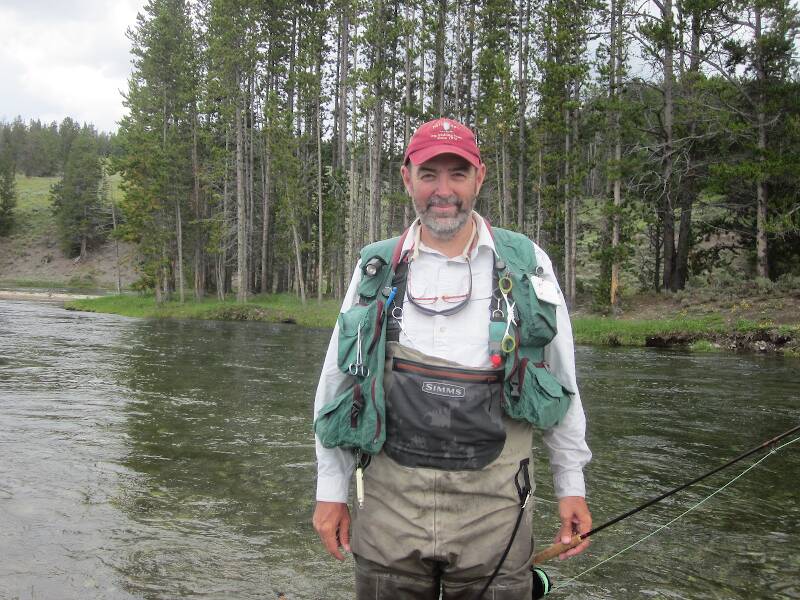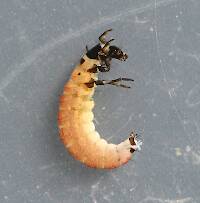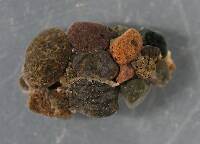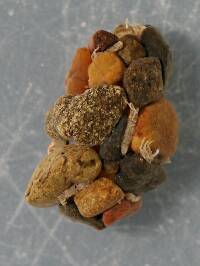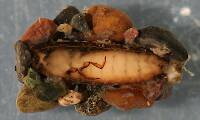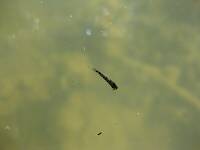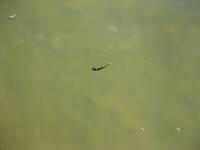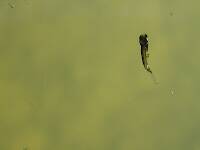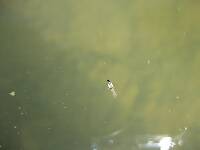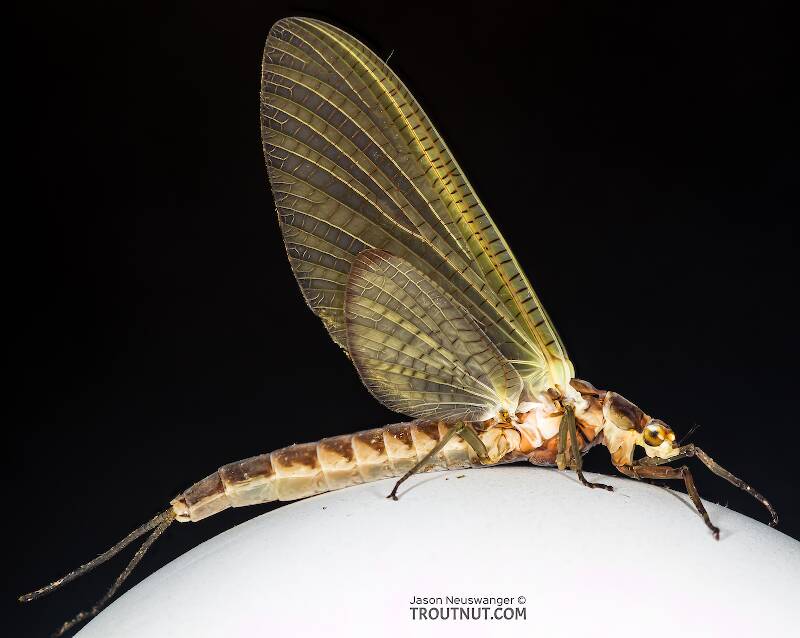
Hex Mayflies
Hexagenia limbata
The famous nocturnal Hex hatch of the Midwest (and a few other lucky locations) stirs to the surface mythically large brown trout that only touch streamers for the rest of the year.
Featured on the forum
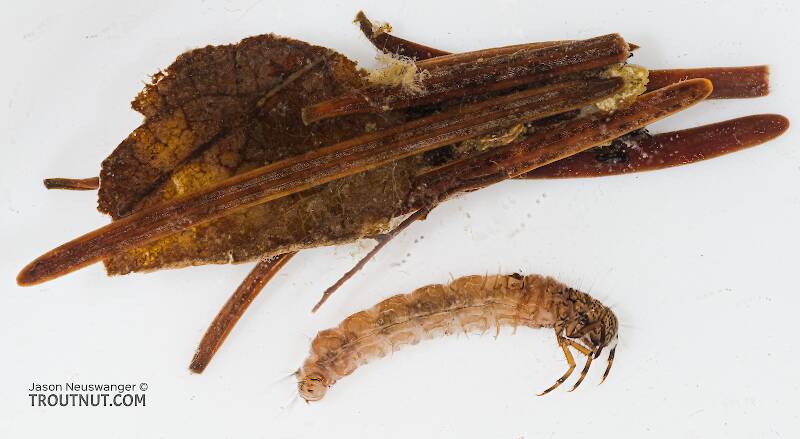
It's only barely visible in one of my pictures, but I confirmed under the microscope that this one has a prosternal horn and the antennae are mid-way between the eyes and front of the head capsule.
I'm calling this one Pycnopsyche, but it's a bit perplexing. It seems to key definitively to at least Couplet 8 of the Key to Genera of Limnephilidae Larvae. That narrows it down to three genera, and the case seems wrong for the other two. The case looks right for Pycnopsyche, and it fits one of the key characteristics: "Abdominal sternum II without chloride epithelium and abdominal segment IX with only single seta on each side of dorsal sclerite." However, the characteristic "metanotal sa1 sclerites not fused, although often contiguous" does not seem to fit well. Those sclerites sure look fused to me, although I can make out a thin groove in the touching halves in the anterior half under the microscope. Perhaps this is a regional variation.
The only species of Pycnopsyche documented in Washington state is Pycnopsyche guttifera, and the colors and markings around the head of this specimen seem to match very well a specimen of that species from Massachusetts on Bugguide. So I am placing it in that species for now.
Whatever species this is, I photographed another specimen of seemingly the same species from the same spot a couple months later.
I'm calling this one Pycnopsyche, but it's a bit perplexing. It seems to key definitively to at least Couplet 8 of the Key to Genera of Limnephilidae Larvae. That narrows it down to three genera, and the case seems wrong for the other two. The case looks right for Pycnopsyche, and it fits one of the key characteristics: "Abdominal sternum II without chloride epithelium and abdominal segment IX with only single seta on each side of dorsal sclerite." However, the characteristic "metanotal sa1 sclerites not fused, although often contiguous" does not seem to fit well. Those sclerites sure look fused to me, although I can make out a thin groove in the touching halves in the anterior half under the microscope. Perhaps this is a regional variation.
The only species of Pycnopsyche documented in Washington state is Pycnopsyche guttifera, and the colors and markings around the head of this specimen seem to match very well a specimen of that species from Massachusetts on Bugguide. So I am placing it in that species for now.
Whatever species this is, I photographed another specimen of seemingly the same species from the same spot a couple months later.

Troutnut is a project started in 2003 by salmonid ecologist Jason "Troutnut" Neuswanger to help anglers and
fly tyers unabashedly embrace the entomological side of the sport. Learn more about Troutnut or
support the project for an enhanced experience here.
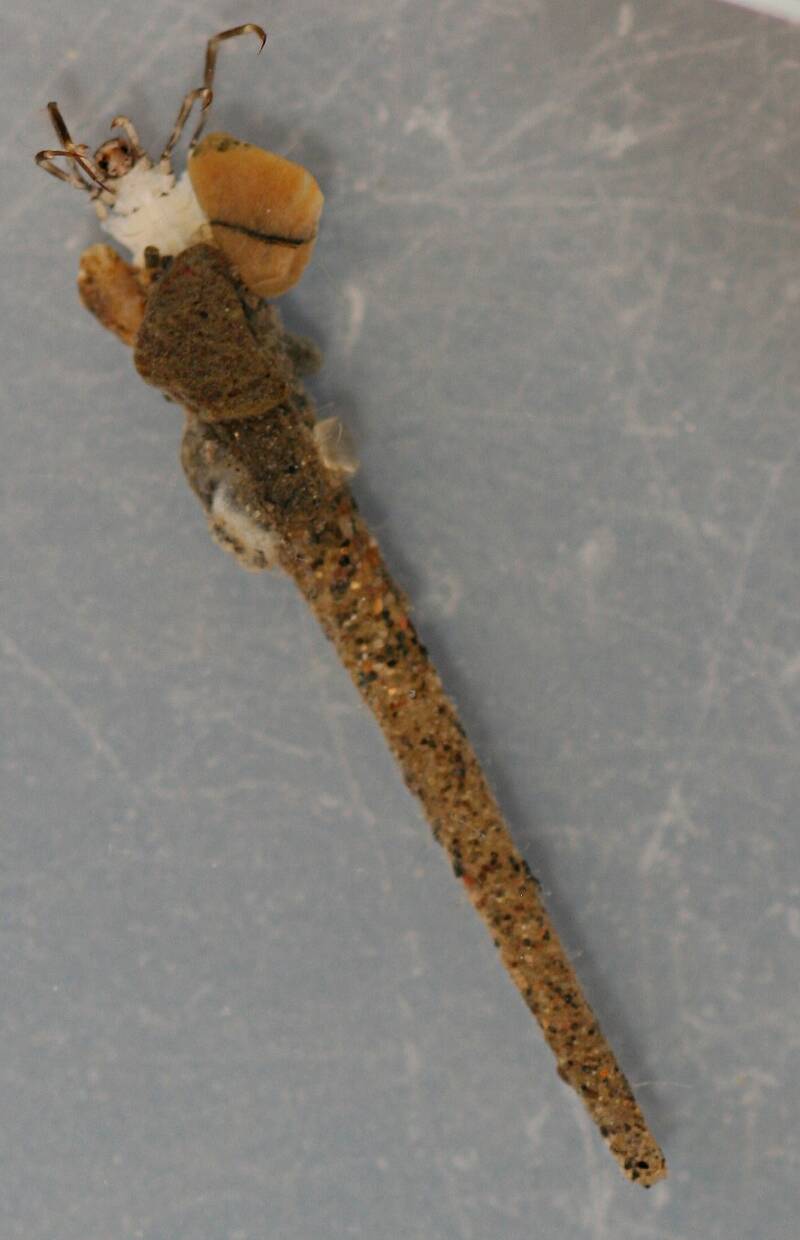
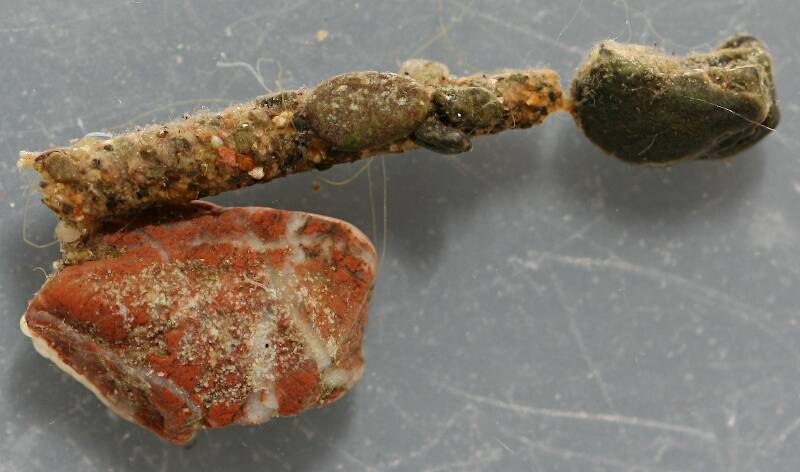
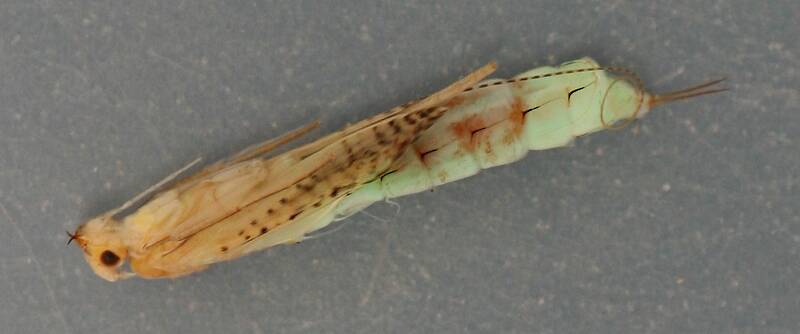

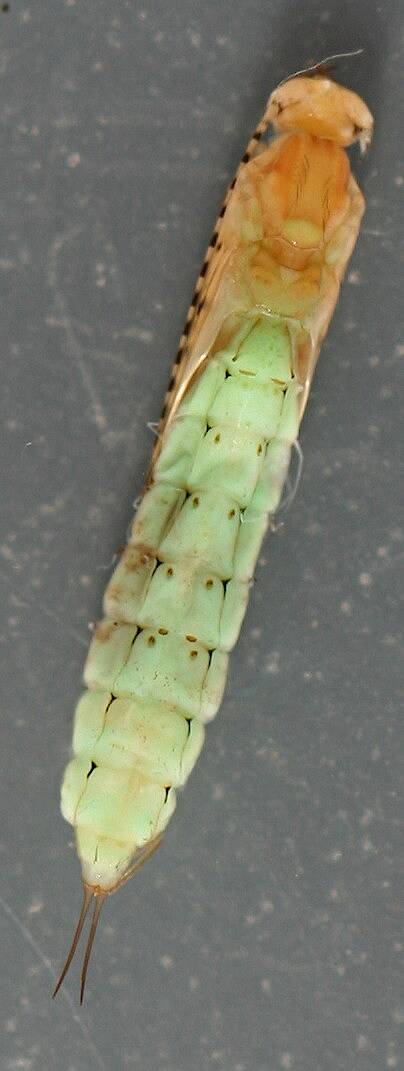
Millcreek on Jun 18, 2015June 18th, 2015, 1:17 pm EDT
I've put up the larva before but not the pupa. The pupa is commonly found attached at both ends to stones. Occasionally it is found attached by the front end to a large stone. It is usually found in slack water.
The common name is White Miller.
"If we knew what it was we were doing, it would not be called research, would it?"
-Albert Einstein
-Albert Einstein
Taxon on Jun 18, 2015June 18th, 2015, 8:05 pm EDT
Mark,
Wow, what gorgeous pupal photos. Don't recall having previously seen a forked terminal process on a caddisfly. Thanks for sharing.
Wow, what gorgeous pupal photos. Don't recall having previously seen a forked terminal process on a caddisfly. Thanks for sharing.
Millcreek on Jun 18, 2015June 18th, 2015, 8:36 pm EDT
Roger,
Several caddisfly pupae have forked terminal processes. Some that come to mind are various Leptoceridae species, some Uenoidae species and some Odontoceridae. Anyway, it's always fun to find something like that.
Mark
Several caddisfly pupae have forked terminal processes. Some that come to mind are various Leptoceridae species, some Uenoidae species and some Odontoceridae. Anyway, it's always fun to find something like that.
Mark
"If we knew what it was we were doing, it would not be called research, would it?"
-Albert Einstein
-Albert Einstein
Taxon on Jun 18, 2015June 18th, 2015, 11:14 pm EDT
Mark-
Live and learn, I guess! :-)
Live and learn, I guess! :-)
Oldredbarn on Jun 19, 2015June 19th, 2015, 6:38 am EDT
Hey guys...How about walking us through the process after this stage?
I'm looking at the pictures where we see the underside of the insect and was wondering...Does all of this continue to the next stage? What I mean is, the wings here seem short...Does the green abdomen drop off or does that remain with the adult?
Maybe this specimen isn't "that" close to "hatching"...
How about a walk through?
Spence
I'm looking at the pictures where we see the underside of the insect and was wondering...Does all of this continue to the next stage? What I mean is, the wings here seem short...Does the green abdomen drop off or does that remain with the adult?
Maybe this specimen isn't "that" close to "hatching"...
How about a walk through?
Spence
"Even when my best efforts fail it's a satisfying challenge, and that, after all, is the essence of fly fishing." -Chauncy Lively
"Envy not the man who lives beside the river, but the man the river flows through." Joseph T Heywood
"Envy not the man who lives beside the river, but the man the river flows through." Joseph T Heywood
Millcreek on Jun 19, 2015June 19th, 2015, 7:35 am EDT
Spence - The abdomen remains with the adult. The wings are somewhat shortened and folded and stay that way until it becomes an adult. You can get an idea of how it works by looking at the exuvia left behind when it transforms from pupa to adult.
http://www.troutnut.com/topic/8669/Neophylax-larvae-and-pupae
Mark
http://www.troutnut.com/topic/8669/Neophylax-larvae-and-pupae
Mark
"If we knew what it was we were doing, it would not be called research, would it?"
-Albert Einstein
-Albert Einstein
Taxon on Jun 19, 2015June 19th, 2015, 8:54 am EDT
Hi Spence-
I sense that your question relates primarily to the disparity of the wing/abdomen length, between the pupal and adult life stages.
With regard to only that specific issue, the abdomen remains essentially the same length in the adult. However the wings of the adult get "inflated" through their venation at time of emergence, such that the longer fore wings end up reaching well beyond the end of the adult abdomen when in their resting position. Hope this helps.
I sense that your question relates primarily to the disparity of the wing/abdomen length, between the pupal and adult life stages.
With regard to only that specific issue, the abdomen remains essentially the same length in the adult. However the wings of the adult get "inflated" through their venation at time of emergence, such that the longer fore wings end up reaching well beyond the end of the adult abdomen when in their resting position. Hope this helps.
Oldredbarn on Jun 19, 2015June 19th, 2015, 2:04 pm EDT
Yes it does. Thanks to both of you. 13mm is a pretty fair sized caddis.
Spence
Spence
"Even when my best efforts fail it's a satisfying challenge, and that, after all, is the essence of fly fishing." -Chauncy Lively
"Envy not the man who lives beside the river, but the man the river flows through." Joseph T Heywood
"Envy not the man who lives beside the river, but the man the river flows through." Joseph T Heywood
Quick Reply
Related Discussions
Topic
Replies
Last Reply
2
Feb 6, 2017
by Crepuscular
by Crepuscular
1
Aug 1, 2008
by Troutnut
by Troutnut



